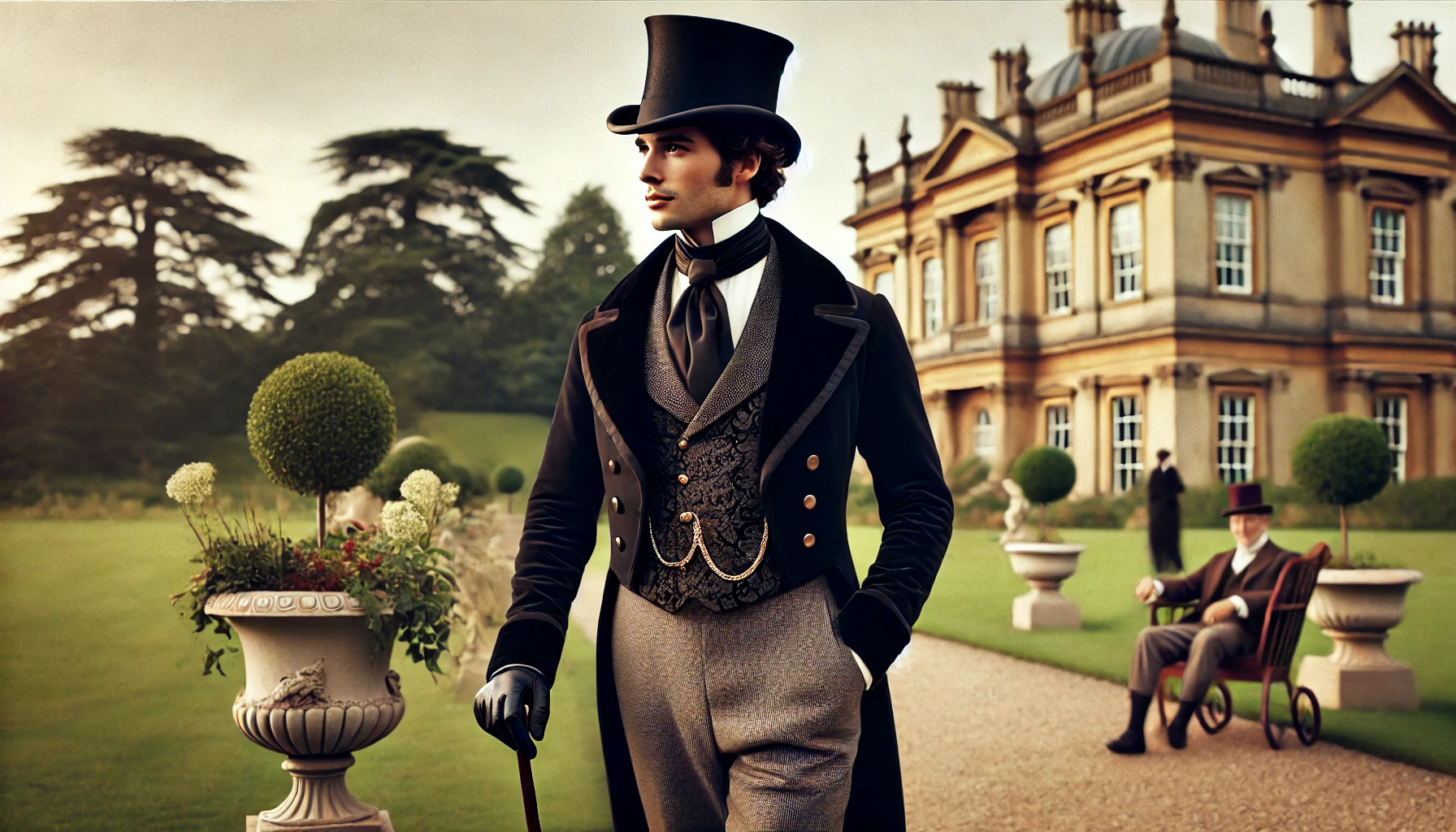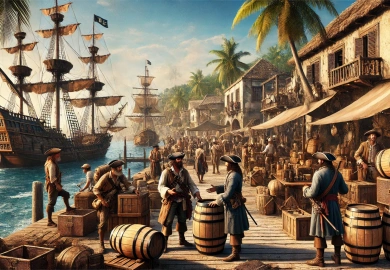
The 19th century in Britain was a time of immense social change and industrial revolution, but also a period where the fashions of the wealthy elite, especially the British landlords, reflected their status, taste, and power. These styles evolved in parallel with societal shifts, moving from the lavishly ornate outfits of the Regency era to the more restrained and practical designs seen later in the Victorian period. British landlords, often owning vast estates and presiding over agricultural lands, dressed to display their wealth and social importance, embodying both the elegance and pragmatism of the times. Let’s take a deeper look into the fashion and style trends of British landlords throughout the 19th century.
The Influence of the Regency Era on Landlord Fashion
The early part of the 19th century was marked by the Regency period (1811-1820), during which British landlords adopted a style heavily influenced by neoclassicism. This era saw a shift away from the elaborate styles of the 18th century, towards more refined and structured garments. For male landlords, the tailcoat became an iconic piece, often crafted from fine wool or velvet, paired with tightly fitted breeches and waistcoats that showed off their aristocratic physiques.
Tailcoats were generally worn in dark hues such as black, navy, or deep green, exuding a sense of formality and dignity. The use of waistcoats, often embroidered or designed with intricate patterns, provided a striking contrast to the somber colors of the tailcoats. Meanwhile, high cravats wrapped around the neck, giving men a distinguished, authoritative appearance, while also symbolizing refinement and a sense of duty.
For female landlords, the empire silhouette became a popular choice during the Regency era. Inspired by ancient Greece and Rome, this style featured high-waisted gowns that flowed loosely over the body. Women often paired these gowns with spencers or pelisses—short jackets or long coats that added warmth while maintaining the classical elegance of their outfits. Light fabrics like muslin or silk were favored, as they represented grace and subtlety.
The Victorian Landlord: Fashion of Power and Piety
As the century progressed into the Victorian era (1837-1901), the fashion of British landlords underwent a significant transformation, reflecting the changing social and moral climate. Queen Victoria’s reign brought about a period of relative conservatism, and this was mirrored in the clothing choices of landlords. Where the Regency era was marked by light fabrics and open designs, the Victorian age embraced more structured, formal clothing, underscoring the growing influence of industrialization and propriety.
For male landlords, the three-piece suit became a hallmark of Victorian fashion. This ensemble consisted of a matching jacket, waistcoat, and trousers, often made of wool or tweed, which were sturdy and practical fabrics. The colors were typically muted—greys, blacks, and browns—as flamboyant dress was seen as distasteful among the more conservative upper class. Top hats and fob watches became essential accessories, emphasizing both affluence and a sense of responsibility.
Women landlords of the Victorian period dressed in heavier and more modest clothing compared to their Regency counterparts. The crinoline and bustle played prominent roles in shaping their silhouettes, with skirts that expanded dramatically from the waist down, creating a bell-shaped profile. Bodices were often stiff and tightly fitted, reflecting a sense of control and discipline. Dresses were adorned with lace, ruffles, and brooches, but in keeping with Victorian ideals, the designs remained relatively modest. Darker colors such as maroon, navy, and black were commonly worn, especially for formal or evening events.
The Role of Tailoring in 19th Century Landlord Fashion
One of the most significant developments in 19th century British fashion was the rise of tailoring, especially among landlords. The desire for impeccably fitted clothing grew, and as a result, tailors became highly sought-after. In particular, Savile Row in London became synonymous with expertly crafted, bespoke garments for the elite. British landlords relied on tailors to create garments that were both functional for estate management and appropriate for formal social events.
Tailoring was crucial for male landlords, especially as they transitioned into wearing the morning coat and later the frock coat. Both coats were designed with clean lines that reflected their position and authority. These coats were paired with striped trousers and often completed with an overcoat, gloves, and a cane, particularly during outings or social events. The precision of a tailor’s work ensured that these garments fit perfectly, allowing the wearer to exude confidence and class.
For women, tailoring ensured that even though dresses were elaborate, they remained wearable. The use of corsetry, boning, and intricate fastenings helped create the desired silhouette without sacrificing the ability to move about freely in their day-to-day lives. Even accessories like gloves, hats, and shawls were often made to measure, reflecting the overall sense of cohesion and elegance in their wardrobes.
Accessories and the Social Statement of Fashion
In the 19th century, fashion for landlords was about more than just clothing—it was about making a social statement. Accessories played a crucial role in this, allowing landlords to showcase their wealth and status through the finer details of their attire.
For men, the top hat became an iconic accessory, often made from beaver fur or silk. The height and shine of the hat were seen as markers of wealth, and it was a staple of any landlord’s wardrobe. Walking sticks and canes were another common accessory, often made of polished wood with silver or ivory handles, symbolizing not only their wealth but also their authority.
Pocket watches, usually gold or silver, were a functional yet luxurious accessory that also reflected a landlord’s punctuality and discipline—virtues highly valued in the Victorian era. These were often attached to a waistcoat by a fob chain, which became a subtle yet significant statement of style.
Women landlords, on the other hand, often carried reticules—small handbags made from luxurious fabrics like velvet or satin. They also wore gloves at nearly all times, whether attending a social gathering or riding in their carriages. Hats adorned with feathers, lace, and ribbons were a staple of outdoor fashion, while jewelry such as cameo brooches and lockets added a personal and sentimental touch to their outfits.
In both men’s and women’s fashion, these accessories were not just practical; they were symbols of social rank, personal taste, and the values that landlords of the 19th century held dear.
By understanding the nuances of British landlord fashion in the 19th century, it’s clear that clothing was not merely a matter of personal style. It was a complex interplay between social standing, practicality, and the shifting cultural norms of the era. Whether in the neoclassical elegance of the Regency period or the structured propriety of the Victorian age, landlords used fashion as a means to communicate their wealth, power, and place within British society. Their attire, painstakingly tailored and accessorized, was an external display of their internal values, leaving a lasting impression on the fashion world for decades to come.








